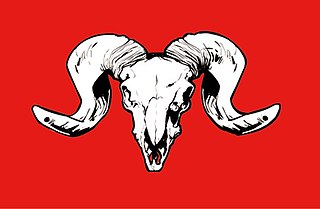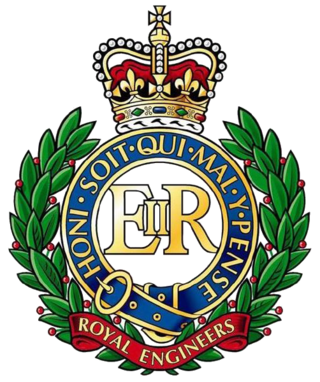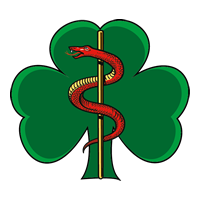
The 20th Armoured Brigade Combat Team, previously the 20th Armoured Infantry Brigade, is an armoured infantry brigade formation of the British Army, currently headquartered at Wing Barracks, Bulford, Wiltshire, as part of the 3rd Division.

The 2nd Signal Brigade, was a military formation of the British Army composed of Royal Corps of Signals units. The brigade was first formed following the reorganisation of the old Territorial Army in 1967, and was disbanded in 2012 under the Army 2020 programme. However, later the 2nd Signal Group was formed continuing the lineage of the old brigade, before it was disbanded in 2018.

The Berlin Infantry Brigade was a British Army brigade-sized garrison based in West Berlin during the Cold War. After the end of World War II, under the conditions of the Yalta and Potsdam agreements, the Allied forces occupied West Berlin. This occupation lasted throughout the Cold War. The French Army also had units in Berlin, called the French Forces in Berlin and the US Army's unit in Berlin was the Berlin Brigade.

The 1st Artillery Brigade was a support formation of the British Army from 1961-77 and from 1997. Part of the 3rd Division, it oversaw all army close support artillery and deep fires units. Under the Future Soldier programme, the brigade merged with 1st Armoured Infantry Brigade to form 1st Deep Reconnaissance Strike Brigade Combat Team.
The following is a hierarchical outline for the structure of the British Army in 1989. The most authoritative source for this type of information available is Ministry of Defence, Master Order of Battle, and United Kingdom Land Forces, HQ UKLF, UKLF ORBAT Review Action Plan, HQ UKLF, 1990.
8 Regiment RLC was a regiment of the British Army's Royal Logistic Corps.

The 12th Signal Brigade, later 12th Signal Group was a military communications formation of the British Army commanding regiments of the Royal Corps of Signals. Initially formed in 1967, the brigade would provide rear defence communications for the British Army of the Rhine until its disbandment in 1992. In 2004, the group was reformed to provide territorial army and rear support to the Allied Rapid Reaction Corps in Germany. However, in 2009 the group was disbanded following reductions to the Royal Corps of Signals and Territorial Army.
201 (Northern) Field Hospital was a unit of the Royal Army Medical Corps within the Army Reserve of the British Army.
202 (Midlands) Multi-Role Medical Regiment is a unit of the Royal Army Medical Corps within the Army Reserve of the British Army.

203 (Welsh) Multi-Role Medical Regiment is a unit of the Royal Army Medical Corps within the Army Reserve of the British Army, based in Wales.

204 Field Hospital was a unit of the Royal Army Medical Corps within the Army Reserve of the British Army.

The 1st Field Engineer Squadron is an engineer unit of the Corps of Royal Engineers within the British Army. The squadron was first formed in 1914 following the mobilisation of the Army for the First World War. The squadron later supported The Cavalry Division and the first British Army of the Rhine. The squadron later saw service in the Second World War and today supports the 21st Engineer Regiment of the new 1st Strike Brigade.

253 Medical Regiment was a regiment of the Royal Army Medical Corps within the Army Reserve of the British Army.
205 (Scottish) Field Hospital was a unit of the Royal Army Medical Corps within the Army Reserve of the British Army.
207 (Manchester) Field Hospital was a unit of the Royal Army Medical Corps within the Army Reserve of the British Army.
212 (Yorkshire) Field Hospital was a unit of the Royal Army Medical Corps within the Army Reserve of the British Army.
243rd (Wessex) Multi-Role Medical Regiment is a unit of the Royal Army Medical Corps within the Army Reserve of the British Army.
256 Multi-Role Medical Regiment is a unit of the Royal Army Medical Corps within the Army Reserve of the British Army.
Future Soldier is a reform of the British Army resulting from the Integrated Review of Security, Defence, Development and Foreign Policy published in March 2021. The aim of the reform is to create a more lethal, agile and expeditionary force, able to fight and win wars and to operate in the grey-zone between peace and war. Future Soldier was published on 25 November 2021 and deals with the organizational changes of the British Army, with changes to personnel and equipment were set out in the Defence in a Competitive Age paper published on 22 March 2021.
The 219th (Wessex) Field Hospital was a field hospital of the British Army forming part of the Royal Army Medical Corps. Though short-lived having been formed in 1967 and disbanded in 1996, the hospital's remaining detachments continue to serve in its successor unit, the 243rd Field Hospital.








